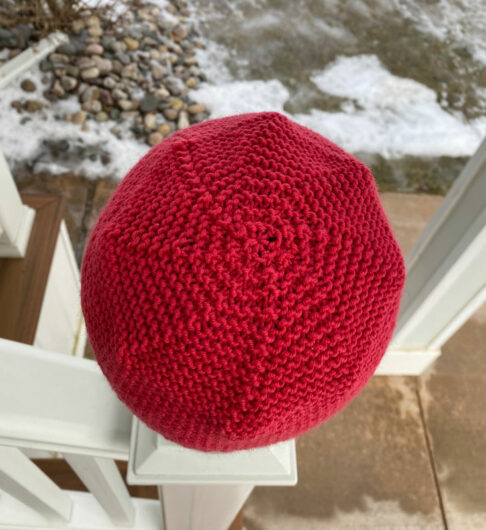Let’s start at the end of Helen Stewart’s (“Curious Handmade’s) Miss May Mystery Knit-a-long. The result: my shawl. I don’t knit a ton of lace so this shawl was a challenge at times. But it was so worth the effort. And despite my wariness of mystery knits it was a lot of fun and not at all scary.
Each Tuesday for 5 weeks, Stewart released a “clue,” that is, a section of the pattern. All we knew was that we were making a large crescent shaped fingering weight shawl. The recommendation was that we select four colorways. And we knew how much yarn we’d need.
I chose Classic Elite’s now-discontinued Yuri, a 75% Merino, 25% nylon yarn. I’d had the set of 4 colors in my stash for several years awaiting the right project.
My initial inspiration wasn’t a Miss May textile. I was really drawn to this color pallette by the colors of my pre-lake home neighbor’s bee hive boxes.
I thought the 4 Yuri colorways would work really well together. First came dark gray. Then the daffodil. If I’d have had coral that would have worked out well and been closer to Ben’s bee hives inspiration. But what I had was that Poppy–bright orange. I chickened out. The orange was turning the shawl too Halloweeny. I’m often perfectly OK with dressing festively but this lace was looking kind of sophisticated. I decided Poppy wouldn’t just pop it would gaudy up my shawl. So I set out to find a 4th color in a yarn similar to Yuri in fiber content, in the roundedness of the spin, and in the way Yuri had some tonal going for it.
Fangirl’s Superwash Sock, an 80% merino 25% nylon, fit the shawl more appropriately. Because once I started thinking that the Poppy would turn my shawl into a Halloween garment I just couldn’t unthink it.
The result? A lightweight shawl that drapes nicely. It blocked into a beauty of a shawl.
So who’s Miss May Morris? She was important in the British Arts & Crafts movement and specialized in art needlework, sort of free-form embroidery, and jewelry making. Her father was William Morris, the key figure in the Arts & Crafts movement. He overshadowed her work to the point that sometimes her designs were improperly attributed to him. Here she is in 1909:
And earlier in 1872, as painted by Dante Gabriel Rossetti:
You can read more about May Morris here and see samples of her work. Many knitters chose their colorways from sections of her embroidery.
Helen Stewart’s Miss May Shawl pattern is available on Ravelry. If you haven’t worked one of Stewart’s patterns before you can be confident that they’re clearly written and error-free. They are both charted and line-by-line. The stitch count is supplied for each row. And she even charts out what percentage of the pattern is complete every few rows. For me, it’s just exactly the right amount of hand-holding. Goodness knows that I need a little hand-holding every time my needles turn to lace. Without that, I can really stink at lace.
There were just under 1000 knitters working on the shawl at the same time. If you check here, you can see many that are complete and others still in progress. Some folks decided to alter the paradigm and knit in all one color. Their shawls may not be very Miss May, but they are beautiful. Others knit their shawl using a fingering weight gradient and the result is also stunning.
If you, like me, are wary of mystery knits maybe keep an eye on Stewart’s MKAL offerings. The group comradery is fun. But it’s also helpful if you need it to be. And Stewart’s pattern writing and design skills are top-tier wonderful!


















